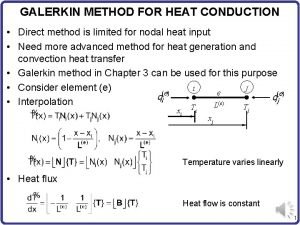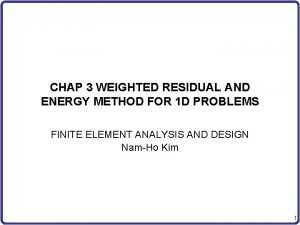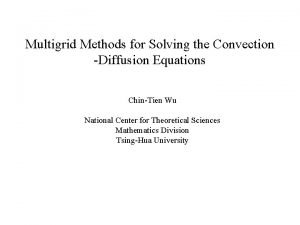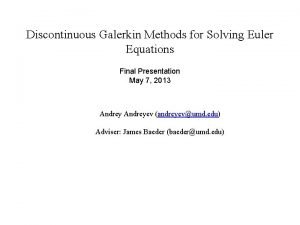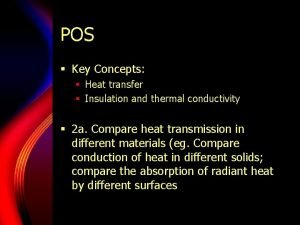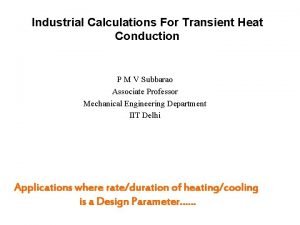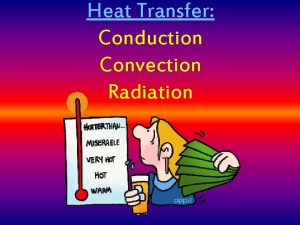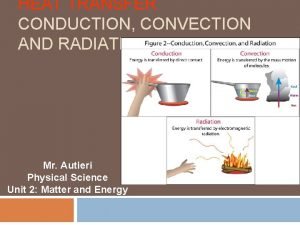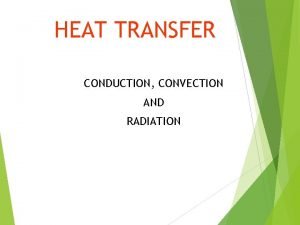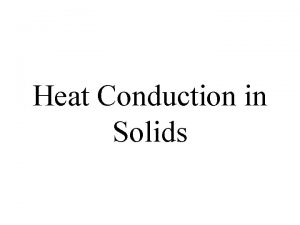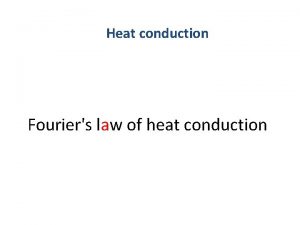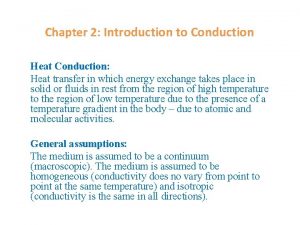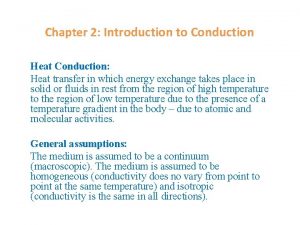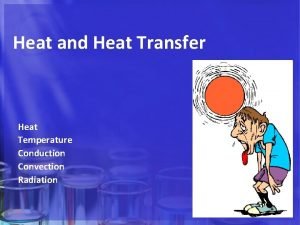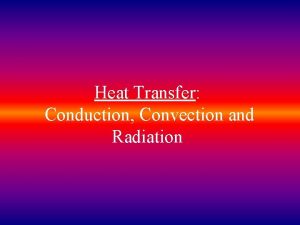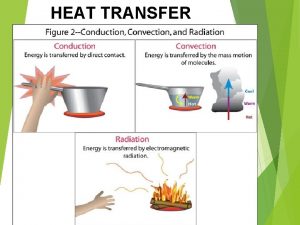GALERKIN METHOD FOR HEAT CONDUCTION Direct method is











- Slides: 11

GALERKIN METHOD FOR HEAT CONDUCTION • Direct method is limited for nodal heat input • Need more advanced method for heat generation and convection heat transfer • Galerkin method in Chapter 3 can be used for this purpose j • Consider element (e) i e • Interpolation L(e) T T xi i j xj Temperature varies linearly • Heat flux Heat flow is constant 1

GALERKIN METHOD • Differential equation with heat generation • Substitute approximate solution Residual • Integrate the residual with Ni(x) as a weight • Integrate by parts 2

GALERKIN METHOD cont. • Substitute interpolation relation, and Fourier law • Perform integration • Repeat with Nj(x) as a weight 3

ELEMENT EQUATION • Combine the two equations Similar to 1 D bar element – {Q(e)}: thermal load corresponding to the heat source – {q(e)}: vector of nodal heat flows across the cross-section • Uniform heat source – Equally divided to the two nodes • Temperature varies linearly in the element, and the heat flux is constant 4

Quiz-like problem • If we have heat Q per unit volume generated only in the left half of the element, how would it be divided between the left and right nodes? • Solution in the notes page 5

EXAMPLE 5. 3 • Heat chamber Wall temperature = 200 C Uniform heat source inside the wall Q = 400 W/m 3. Thermal conductivity of the wall is k = 25 W/m C. Use four elements through the thickness (unit area) Boundary Condition: T 1 = 200, qx=1 = 0. 6

ELEMENT AND SYSTEM EQUATIONS • Element Matrix Equation – All elements are identical – Assembly 7

BOUNDARY CONDITIONS • Boundary Conditions – At node 1, the temperature is given (T 1 = 200). Thus, the heat flux at node 1 (Q 1) should be unknown. – At node 5, the insulation condition required that the heat flux (Q 5) should be zero. Thus, the temperature at node 5 should be unknown. – At nodes 2 – 4, the temperature is unknown (T 2, T 3, T 4). Thus the heat flux should be known. 1 2 4 5 3 Q 5 Q 1 8

SOLVE FOR TEMPERATURES FIRST • Imposing Boundary Conditions – Remove first row because it contains unknown Q 1. – Cannot remove first column because T 1 is not zero. – Instead, move the first column to the right. 9

SOLUTION • Solution • Solving for Q 1 – In order to maintain 200 degree at node 1, we need to remove heat 10

Quiz-like problem • Repeat Example 5. 3 with only two elements • With only two elements, each is 0. 5 m long so k. A/L=25/0. 5=50. On the other hand, the heat generated in each element is 400*0. 5=200. So we have 11
